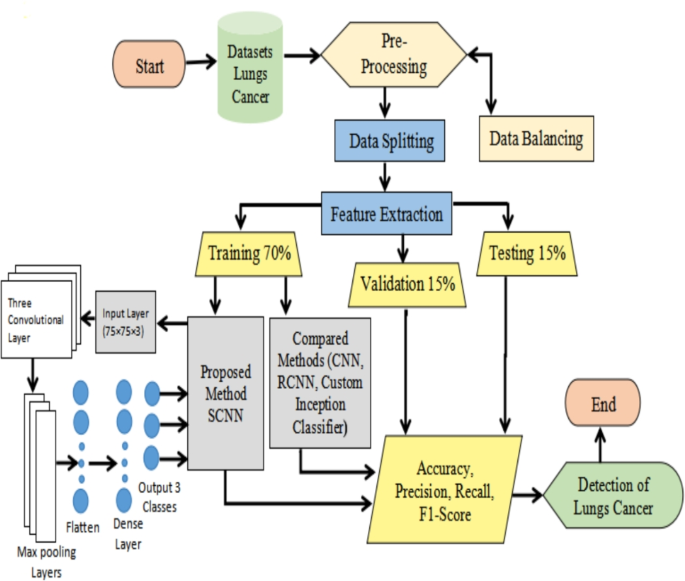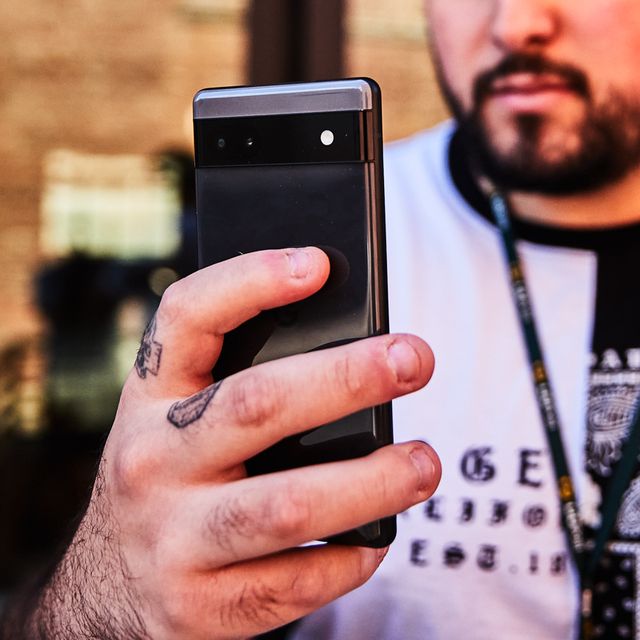
The Ultimate Guide to Budget Android Phones Under $500: Finding Flagship Features Without the Flagship Price
In the ever-accelerating world of mobile technology, the dazzling spotlight often shines brightest on the latest $1,200 flagships. We see the splashy keynotes, the breathless reviews, and the cutting-edge features that promise to redefine our digital lives. But for the vast majority of consumers, the most exciting and relevant developments aren’t happening at the peak of the price pyramid. The real revolution is happening in the trenches: the sub-$500 budget category. This segment has transformed from a wasteland of compromise into a vibrant ecosystem of incredible value. Keeping up with the latest Android News reveals a clear trend—premium features are democratizing at an astonishing rate. Forget the notion that a “budget phone” means a slow, frustrating experience. Today’s best budget Android Phones offer brilliant OLED displays, surprisingly powerful cameras, and multi-day battery life, making them some of the most compelling Android Gadgets you can buy. This guide will navigate this exciting landscape, helping you understand what truly matters and how to find a device that feels like a flagship without emptying your wallet.
The New Golden Age: Why Sub-$500 Android Phones Are Better Than Ever
For years, buying a budget Android phone felt like a game of picking your poison. You could have a decent screen but a terrible camera, or good performance but a plastic build and an outdated version of Android. That era is definitively over. Several key industry shifts have ushered in a golden age for affordable smartphones, making the sub-$500 price point the most competitive and innovative space in the market.
Trickle-Down Techonomics
The primary driver of this revolution is “trickle-down techonomics.” Features that were exclusive to $1,000+ phones just two or three years ago are now standard in the mid-range. Think about it: high-refresh-rate OLED displays, which make scrolling feel buttery smooth, are now common. In-display fingerprint sensors, once a futuristic novelty, are expected. Even advanced camera features, like optical image stabilization (OIS) for clearer low-light shots, are making their way into this bracket. Manufacturers produce these components at such a massive scale that their costs have plummeted, allowing them to be included in more affordable devices without destroying profit margins. This means consumers get a taste of the premium experience without the associated cost.
The Power of Computational Photography
Perhaps the most significant leap has been in camera technology. It’s no longer just about the hardware or the megapixel count. The secret sauce is software. Google’s Pixel A-series is the poster child for this movement. By leveraging sophisticated machine learning and AI algorithms on their custom Tensor chips, Google can produce photos from a modest 12MP or 64MP sensor that rival those from phones with much more expensive hardware. This focus on computational photography means that stunning portraits with realistic background blur, vibrant night shots, and clean, detailed images are no longer the exclusive domain of flagship devices. Other brands, like Samsung, are integrating their own software enhancements, proving that a great camera experience is more about the code than the components.
Maturity of Mid-Range Processors
The performance gap between flagship and mid-range processors has narrowed significantly for everyday use. Companies like Qualcomm (with their Snapdragon 7 and 6 series) and MediaTek (with their Dimensity line) are producing chips that are more than capable of handling the vast majority of tasks with ease. From browsing social media and streaming 4K video to playing popular games like Call of Duty: Mobile, these modern mid-range chipsets deliver a smooth, lag-free experience. While they may not top benchmark charts, they are highly efficient, which often translates to another crucial benefit: superior battery life. A less power-hungry chip, combined with a large 5,000mAh battery (now a common spec in this category), results in phones that can easily last a full day and a half, or even two, on a single charge.
Deconstructing the Spec Sheet: What Really Matters Under $500
When you’re shopping for a budget Android phone, the spec sheet can be a confusing mix of numbers and jargon. It’s easy to get fixated on the biggest numbers, but the reality is that not all specs are created equal. Here’s a breakdown of what to prioritize and what to ignore to get the best real-world experience.
The Camera: Megapixels vs. Magic

This is the biggest pitfall for uninformed buyers. A phone advertising a 108MP or even 200MP camera sounds impressive, but it’s often a marketing gimmick. Without excellent software processing, a high-megapixel sensor can produce noisy, flat, or poorly colored images. Furthermore, many devices in this price range pair that impressive main sensor with useless 2MP macro and depth sensors just to say they have a “triple” or “quad” camera system.
Best Practice: Look for quality over quantity. A phone like the Google Pixel 7a with a 64MP main sensor and a 13MP ultrawide will consistently outperform a phone with a 108MP main sensor and two throwaway 2MP lenses. Why? Because Google’s image processing is world-class. Also, look for the inclusion of Optical Image Stabilization (OIS) on the main lens. It’s a hardware feature that physically counteracts your hand’s shakiness, leading to dramatically better photos and videos, especially in low light.
The Display: Your Window to the Digital World
You interact with your phone’s display constantly, so it’s a critical component. The two main technologies you’ll see are LCD and OLED (or AMOLED).
- LCD: A backlight shines through a panel of liquid crystals. It’s a mature technology that can look good, but it can’t produce true blacks (they look more like a dark grey) and generally has lower contrast.
- OLED: Each pixel produces its own light. This means that to display black, the pixels simply turn off, resulting in perfect blacks, infinite contrast, and more vibrant, punchy colors. It’s also more power-efficient when displaying dark content.
Best Practice: Prioritize a phone with an OLED display. The difference in quality is immediately noticeable, especially when watching videos or viewing photos. Also, look for a refresh rate of at least 90Hz, with 120Hz being even better. This refers to how many times the screen updates per second. A higher number results in much smoother scrolling and a greater sense of responsiveness throughout the user interface.
Software and Security: The Long-Term Investment
This is arguably the most overlooked—and most important—aspect of a budget phone. A device can have the best hardware in the world, but if it’s running clunky, ad-filled software and never gets updated, it will be a frustrating and insecure experience. The latest Android News is often filled with reports of new security vulnerabilities, and timely updates are your only defense.
Best Practice: Check the manufacturer’s update promise before you buy. Samsung is the current leader in the Android world, offering an incredible four years of major OS updates and five years of security patches on many of its A-series phones. Google’s Pixel devices also offer a great promise of timely updates directly from the source. Be wary of smaller brands that have a poor track record of software support. A phone that receives updates for several years is a much better long-term investment.
The Contenders: Matching the Right Phone to Your Needs
The “best” sub-$500 phone doesn’t exist in a vacuum; it depends entirely on your priorities. Let’s look at some top contenders through the lens of different user profiles.
Case Study 1: The “Point-and-Shoot” Social Sharer
User Profile: Sarah is a foodie who loves posting pictures of her meals on Instagram. She values a camera that she can pull out, snap a photo, and trust that it will look great without any editing. She also wants a clean, simple user experience.
Top Recommendation: Google Pixel 7a (or upcoming Pixel 8a)

The Pixel A-series is the undisputed champion of camera performance in this price range. Its strength lies in Google’s computational photography. Features like Night Sight turn dark, grainy scenes into bright, usable photos. The Portrait Mode is best-in-class, and unique tools like Magic Eraser feel like actual magic. For Sarah, this means she can capture a perfect photo of her latte art in a dim cafe and instantly get a share-worthy result. The clean, stock Android experience with no bloatware is the cherry on top.
Case Study 2: The All-Day Media Streamer
User Profile: Mark is a student who commutes on the train. He spends his time watching Netflix, scrolling through TikTok, and listening to Spotify. His priorities are a big, beautiful screen and a battery that will last all day and then some.
Top Recommendation: Samsung Galaxy A55 (or its predecessor, the A54)
Samsung’s Galaxy A-series is built for media consumption. The Galaxy A55 features a large, stunning 6.6-inch Super AMOLED display with a 120Hz refresh rate that makes video and animations look incredible. Its massive 5,000mAh battery is an endurance champion, easily getting Mark through a full day of classes and his commute without battery anxiety. Plus, Samsung’s industry-leading update policy means his phone will stay secure and get new features for years to come, making it a wise investment.
Case Study 3: The Budget-Conscious Power User
User Profile: David enjoys playing mobile games and values a snappy, responsive feel above all else. He doesn’t take many photos but hates it when his phone stutters or lags while multitasking.
Top Recommendation: OnePlus Nord N30 or Motorola Edge (2023)

Brands like OnePlus and Motorola often prioritize performance and fluidity in their mid-range offerings. These phones frequently pack fast 120Hz or even 144Hz displays and processors that punch slightly above their weight class. While their camera systems might not compete with a Pixel, the user experience for gaming and rapid navigation is top-notch. They also tend to feature very fast charging, allowing David to top up his battery in minutes before a gaming session. These are fantastic Android Gadgets for users who want raw performance and a clean software experience on a budget.
Recommendations and Final Considerations
Choosing the right budget phone is about making informed compromises. No device under $500 will have everything a $1,200 flagship does. The key is to identify what matters most to you and find the phone that excels in those areas.
Pros of Buying a Sub-$500 Phone:
- Incredible Value: You get 80-90% of the flagship experience for less than half the price.
- Excellent Battery Life: Mid-range chips are often more efficient, leading to better endurance.
- Durable Designs: Many use high-quality plastic or “glasstic” backs that are less prone to shattering than the all-glass flagships.
- Sufficient Performance: For the vast majority of users, the performance is more than enough for daily tasks.
Cons and Pitfalls to Avoid:
- Camera Gimmicks: Ignore phones advertising quad-cameras if most are low-quality 2MP sensors. Focus on the quality of the main and ultrawide lenses.
- Poor Software Support: Always verify the manufacturer’s update commitment. A phone without security updates is a liability.
- Missing “Luxury” Features: You’ll likely miss out on features like wireless charging, a top-tier water resistance rating (though many now offer basic IP67), or premium haptic feedback.
- Check Network Bands: If buying an unlocked international model, ensure it fully supports your carrier’s 4G and 5G network bands for the best connectivity.
Conclusion: The Smart Money is on the Mid-Range
The landscape of Android Phones has fundamentally shifted. The days of needing to spend a fortune to get a great smartphone experience are long gone. The sub-$500 market is a testament to technological progress, offering devices that are powerful, beautiful, and reliable. By focusing on the features that truly impact the day-to-day experience—a vibrant OLED display, a capable camera powered by smart software, all-day battery life, and a solid update policy—you can find a device that feels anything but “budget.” Whether you’re a photography enthusiast drawn to the Google Pixel, a media junkie who would love a Samsung Galaxy A-series, or a performance seeker eyeing a OnePlus or Motorola, there is an incredible device waiting for you. The smartest shoppers know that the best value in the world of Android Gadgets isn’t found at the top of the price list, but right in the sweet spot of the mid-range.



